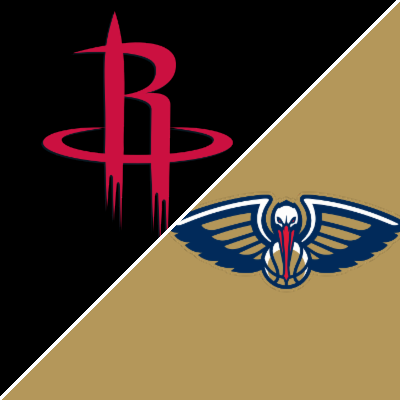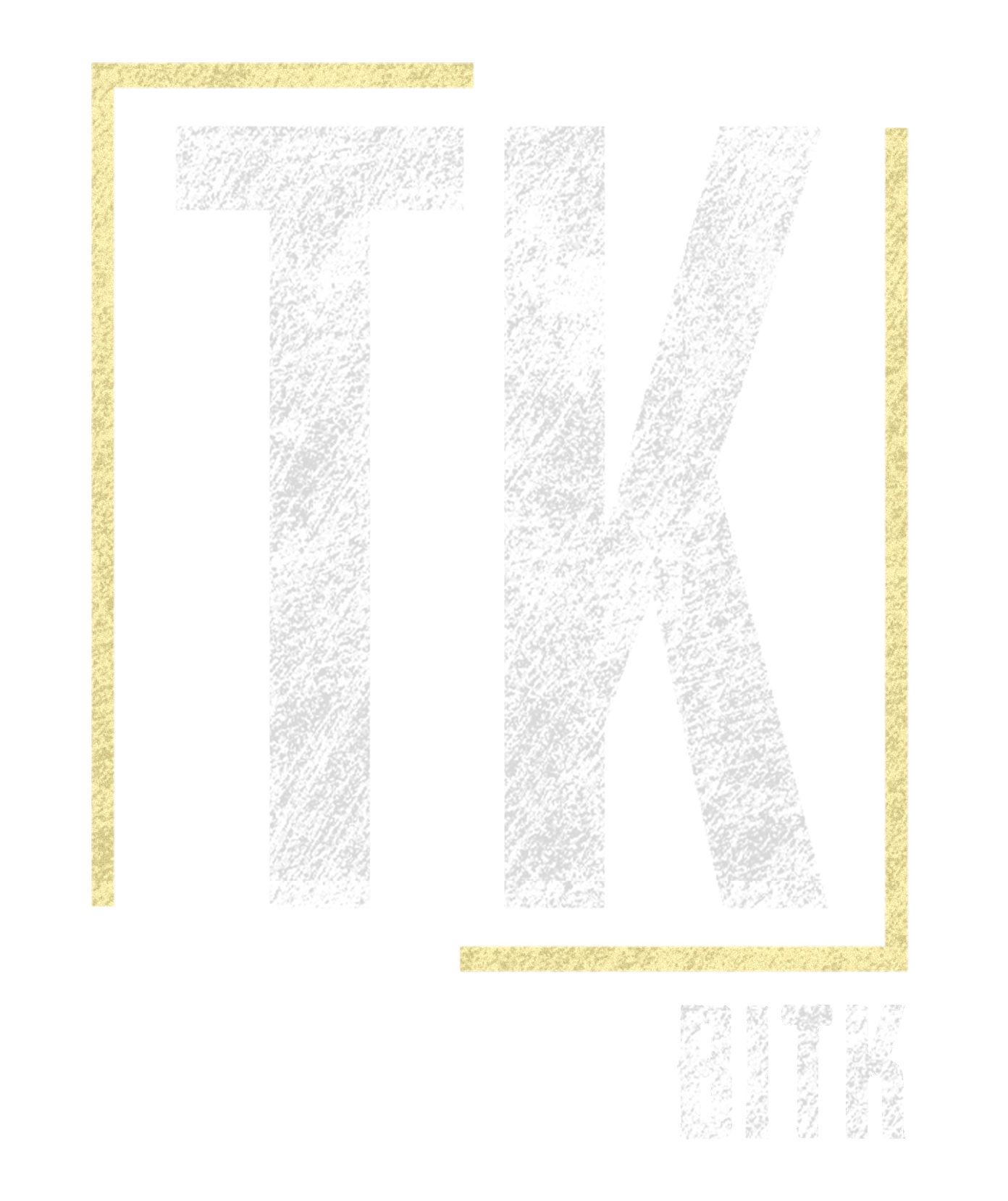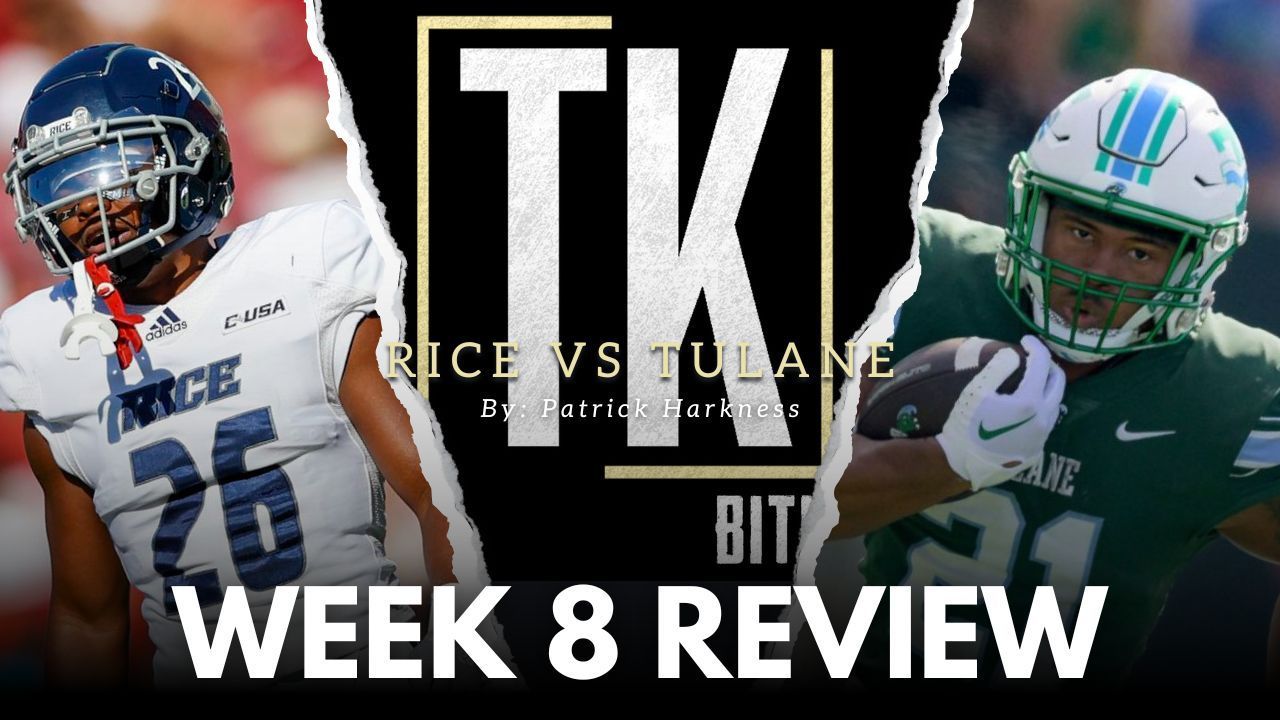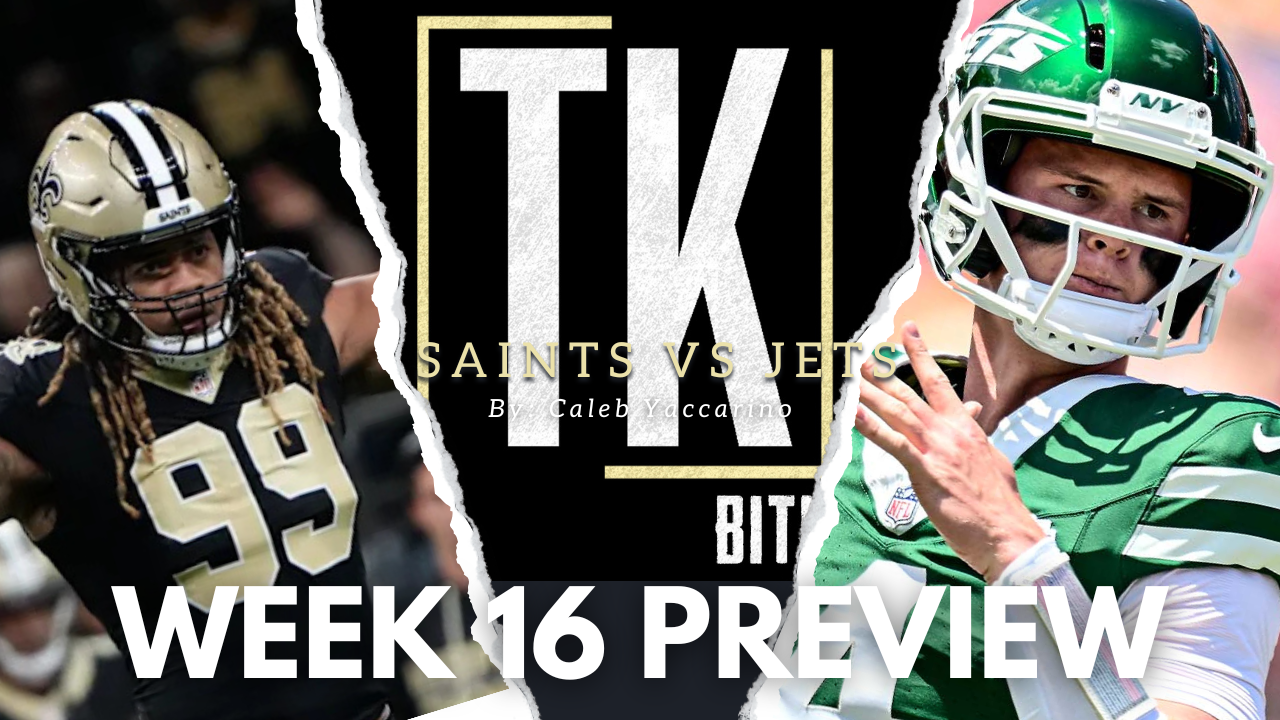Rice vs Tulane Week 8 Preview
Rice Owls vs. Tulane Green Wave
By: Patrick Harkness
Spread: Tulane -23
Total: 53.5
The Tulane Green Wave are coming off their first bye of the season after trouncing UAB 71-20 in their last game. This Tulane Green Wave team is firing on all 3 cylinders offensively, defensively, and special teams. Let’s see how they come out after having two weeks of preparation for the Rice Owls. Rice is led by Mike Bloomgren, who is entering his 7th season (24-50). Rice currently sits at 2-4, with its offense averaging 25.5 points a game, 228.7 passing yards, and 123 rushing yards. They return 12 starters, 3 on offense and 7 on defense. Look for Rice to come out in 12 personnel often, with two senior receiving tight ends. Rice also runs a shotgun, pistol-heavy, and loaded-backfield pro-style offense with three different backs. Dean Connors will be the main focal point for Rice. The do-it-all back is a threat on the ground but mostly in the passing game, where he excels in space.
Defensively, Rice runs a 3-3-5 multiple/3-4 scheme. They’ve been decent against the pass (172 yards per game) ranks third in the AAC, but teams have been able to run on them, with Rice giving up 157 rushing yards per game.
It’s always interesting to see how a team performs after a bye week, especially considering how well Tulane has been playing. Let’s hope they can keep the momentum as they play the Rice Owls in a week 8 home conference game.
Offense
Quarterback – The Mensiah Rising After a Bye Week
Mensah has looked great in his first six collegiate games, going 84/127, with a 66% completion rate, 10 touchdowns, and two interceptions. His development has been evident in his decision-making, pocket awareness, and his Jake the snake-like moves to escape sacks. He may face a challenge against Rice’s pass defense, which ranks third in the AAC. Sean Fresch, a 5'9" senior nickel corner, has been standing out for Rice. He leads the team in tackles (31) and passes deflected (5). Rice’s defense has only totaled 3 interceptions, so while Mensah may have a quiet day due to Tulane’s potent running game, a returning Shazz Preston could spice things up. Fingers crossed!
Ty Thompson
Look for Ty to continue being a key part of the offense in the red zone, and perhaps even more involved this week given Rice’s struggles stopping the run. Tulane’s coaching staff has steadily increased his role, and I expect that to continue running and passing.
Running Backs – Running Backs for Days
Makhi Hughes should have a field day against Rice’s defensive front. With a 3-3-5 defense, Hughes should be able to find plenty of running lanes, especially when Tulane’s efficient offensive line gets to the second level. Keep an eye on Rice linebackers Ty Morris, Myron Morrison, Blaise Tita, and Andrew Awe. Morris, the best of the bunch, is second on the team in tackles (30) and has one sack. Morrison, the heart and soul of Rice’s linebacker core last year, has 18 tackles and 1.5 sacks this season. Shadie Clayton will continue to contribute on passing downs with his receiving ability and speed. True freshman Jamauri McClure is someone who's ready to burst onto the college football scene. This young man has untapped potential with speed, power, and elusiveness. a True three down back. He got his first career touchdown two weeks ago along with 84 yards on just 10 carries. Let’s not forget Trey Cornist and Arnold Barnes, both of whom have had solid games at one point this season.
Receiving Game – The Fantastic Four (or Five? Finally?!?)
Will we finally see Tulane’s passing attack at full strength? Alex Bauman might have dodged a serious injury, and Coach Sumrall said he could return in one to two weeks. Alex is a key part of the passing attack in the redzone. If Shazz Preston makes his Tulane debut, expect a whole new dimension to the offense. Spreading the field in 4-5 wide receiver sets could force Rice into one-on-one matchups or require impeccable zone coverage defense. Mario Williams will likely face a tough day lining up against Sean Fresch, Rice’s best secondary player. So, look for Dontae Fleming (17 catches, 304 yards, and 1 TD) or Yulkeith Brown (14 catches, 207 yards, 3 TD) to step up. Rice has solid safety play, with Gabriel Taylor, Daveon Hook (24 tackles), and Tyson Flowers (14 tackles) patrolling the backfield. Gabriel the vet savvy Safety leads the group, with 26 tackles and an interception.
Offensive Line – Dominance
Tulane’s offensive line is playing like one of the best units in the country. Ranked in the top 10 by PFF, they haven’t allowed a sack since the Oklahoma game. They should dominate against a weak Rice front, but there are two standout pass rushers to watch—Josh Pearcy, who leads the team with 3.5 sacks, and senior lineman Micheal Larbie, also with 3.5 sacks. Expect Tulane’s offensive line to control the line of scrimmage, creating running lanes and setting up deep shots for Mensah when Rice tries to cheat forward.
X-Factor: Spread the Field and Run the Ball
Defense
Defensive Line – Slow Down Dean
Adin Huntington has been banged up, but after some rest, he should be ready to go. Mathew Fobbs White has excelled at the bandit role, benefiting from Terrel Allen’s move to defensive tackle, which has forced teams to double or Allen taking on double teams, leaving Fobbs White with one-on-one matchups. Rice returns three of its five offensive linemen with a key transfer in left guard Chad Lindberg from Georgia (Tulane was in the running for him) and has done well, allowing only four sacks and creating space for Dean Connors. This will be a good test for Tulane’s defensive line who has shined in recent weeks and is currently tied for 12th in the nation for sacks (17).
Linebackers – Stop the Two Tight Ends
Rice is more of a passing team, so expect Tyler Grubbs, Dickson Agu, and Chris Rodgers to be busy. Rodgers, a former safety at Troy, has strong pass coverage skills (2 pick sixes for TD), which will be key against Rice’s tight ends and running backs Connors. Rodgers could be in for a huge game, especially if he’s matched up against Dean Connors in the passing game. If Rodgers or someone on this Tulane defense can blanket the All-AAC running back Rices offense will stand no chance keeping up with Tulane.
Rice has three tight ends—Graham Walker, Boden Groen, and Elijah Mojarro—who have combined for 27 catches, 284 yards, and 1 touchdown. They often line up in 12 personnel, so linebacker and safety play will be crucial.
Secondary – Shut Down Matt Sykes
Matt Sykes, a 6'4" route-running specialist who transferred from UCLA, is Rice’s top WR. He has 31 catches for 378 yards and 3 touchdowns. Tulane’s secondary will have their hands full, especially with Sykes lining up both outside and in the slot. Caleb Ransaw will need to step up if Sykes goes to the slot, while Micah Robinson or Jonathan Edwards will cover him on the outside. Rayshawn Pleasant and Lu Tillery will continue to come in rotationally. Look for true freshman Javion White to get some action as well, especially against Kolbie Campbell, a 5'7" deep threat for Rice. Javion recorded his first career interception two weeks ago against UAB and has steadily been playing all season. Bailey Despanie and Jalen Geiger will definitely have to help out the Linebackers to cover the TEs of Rice with their receiving ability and red zone threat. Rice runs a very pass happy pro style of offense so secondary play and shutting down the do it all running back Dean Conners will be key. He is basically another wide receiver. 34 catches for 248 yards and 1 touchdown with a long of 69.
Rice QB Ej Warner, son of Hall of Famer Kurt Warner, has thrown for 1,302 yards, 9 touchdowns, and 6 interceptions. In his career he has amassed over 6000 yards and 41 touchdowns. The Tulane secondary must capitalize on his tendency to make mistakes.
X-Factor: Stop Dean Connors and Matt Sykes
Special Teams
Kicker/Punter/Return Game
Kicker-Jacob Barnes should be back after his groin injury.
Punter-Will Karrol has been consistently solid the past three games.
KR-Rayshawn Pleasant—can he score his third touchdown of the season?
For more Tulane Football news, check out Wave Watch on YouTube at The Kneaux!
Roll Wave!!
This is Patrick Harkness and you can follow me on X @RollDatWave, Facebook, Instagram, and @BeInTheKneaux everywhere.
A quick share helps us a lot!



